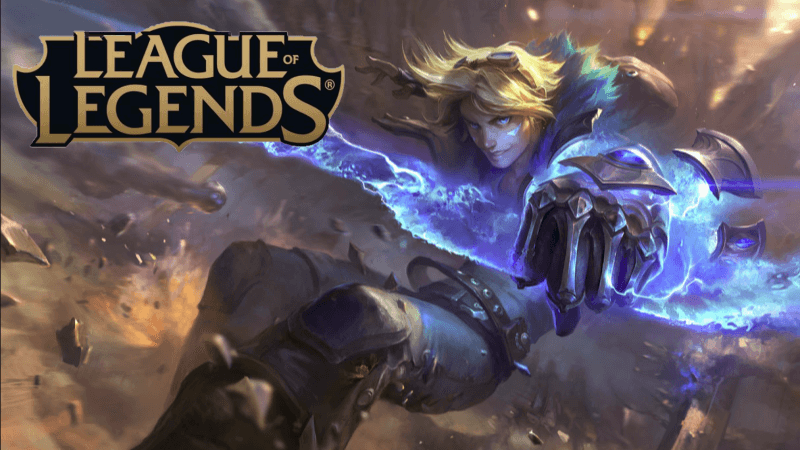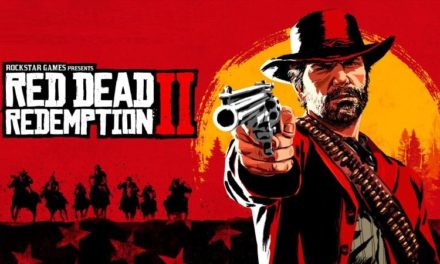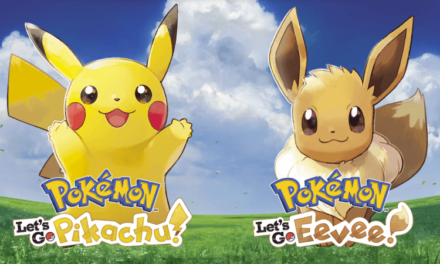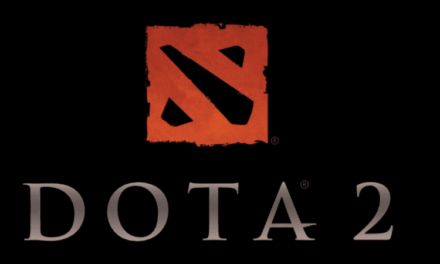League of Legends (LoL) is an MMO battle-arena style real-time strategy PvP/PvC game where players (aka Summoners) are given the ability to control their avatar (aka Champion) with the goal of working, preferably with teammates, to destroy the opposing team’s Nexus before the opposing team destroys their home team’s Nexus. Basically, a more complex version of ‘Warcraft’ combined with a capture-the-flag objective. In fact, the game’s creators have even confirmed that it was inspired by Warcraft III: The Frozen one.
The base game is freemium, meaning that the game is free-to-play, but in-game purchases are available should Summoners not want to invest the time that it would take to acquire those items and skins based solely on skill and personal progress.
Basics:
1. Choosing your Champion
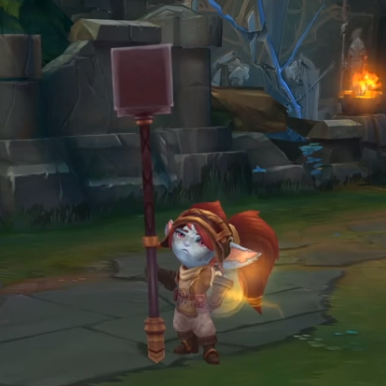
Poppy
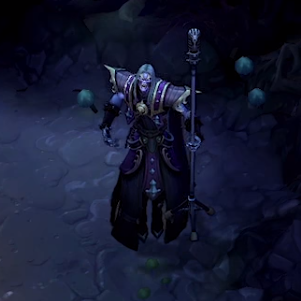
Karthus
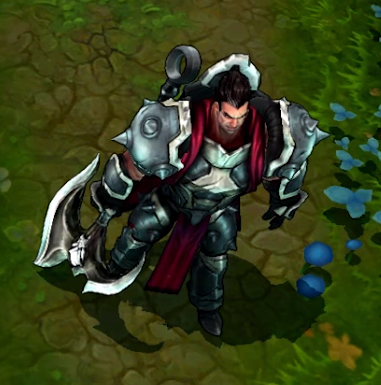
Darius
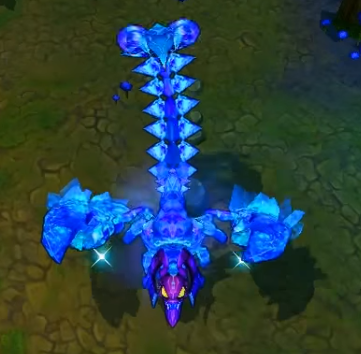
Skarner
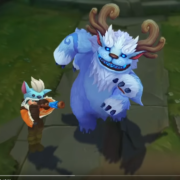
Nunu & Willump
Champions are the main fighters used by Summoner during a game. There are currently over 140 Champions available in LoL., with each Champion boasting its own unique set of strengths and vulnerabilities, as well as its own personality. They can be human, humanoid or non-human. LoL often releases new Champions and alternative skins for those Champions which is where the ‘freemium’ aspect of the game comes in.
Most skins are purchasable with either of the two in-game currencies, namely Riot Points (RP), that or purchasable with real-world currencies, or Blue Essence (BE) that is earned with experience or as a reward for certain in-game accomplishments. Bought Champion generally have better stats than the base Champion that a Summonerwill have when they initially start playing the game. However, Summoners can also use real money to purchase these Champions, which can great improve the Summoner’s chances at success and progress during matches and in leaderboard rankings. However, these purchases are not done directly. Rather, a Summoner needs to first use their currency to purchase RP, and only then can they use RP to perform in-game transactions. Customizable Champion skins can only be purchased with RP.
There are five main hero classes: Fighters, Slayers, Mages, Controllers and Tanks. Each of those classes can be further divided into offensive and defensive subclasses.
- Fighters:
These are Champions for those who prefer a close-combat gameplay style. The offensive subcategory are Divers, whereas its defensive subcategory is a Juggernaut. Divers are extremely mobile and can strongly influence the enemy’s cohesive battle capabilities, Juggernauts, on the other hand, are strong, have high defense stats and can cause high damage effects.
- Slayers:
Their offensive subclass are Assassins, while their defensive subclasses are known as Skirmishes. Assassins are able to issue high burst damage to opponents and possess high levels of mobility, but they have very weak defenses and no crowd control (CC/ enemy confusion) capabilities. Skirmishers are excellent for close-combat fights, as they are highly mobile and have high-damage attacks. They also have a small degree of defensive skills
- Mages:
Mages are the only class with three subclasses, one offensive and two defensives. Battle Mages have mid-range attack scope, combined with incredible damage and crowd control capabilities. As for the defensives, the Artillery Mages offer effective long-range attacks and burst mages usually offer either powerful burst damage, crowd control or mobility capabilities.
- Controllers:
This is another support class, where the two main subcategories are Enchanters that are defensive types that are useful for guerilla and crowd control attacks, and Catchers are offensive types that can buff their allies’ combat stats, while staving off enemy infiltration.
- Tanks:
This class is generally used in team matches, as they offer strong supportive capabilities. There are two subclasses attributed to this category. The defensive types are called Wardens and the offensive types are called Vanguards. Wardens are usually highly mobile, while Wardens are generally healers or defense types.
- Within all five classes, there are another two subcategories, being the marksmen and specialists, who offer further unique capabilities.
- Marksman: these Champions are attack/damage-based types, that rely heavily on item upgrades and levelling up to reach their full potential. Once they are strong enough however, they can make or break (‘Carry’) a game. This is why they are referred to as ‘AD Carries’ in the LoL meta. The way in which these skills are manifest will depend upon the Marksman’s main class.
- Specialists: These are highly diverse and need to be dealt with on a case-by-case basis, hence the name.
2. Player Count and Match-Making
Players can play solo or in teams against either other teams or AI generated teams. Solo players can also opt for AI teammates. In matches with human partners, team-pairings and opponents are matched based on their personal status. This ensures that high-level players cannot be paired with or against noobs, thus allowing for fair gameplay.
3. Starting Point
All Summoners on a team will be spawned at the fountain in their base, with enemy units spawning at their own fountain. This is also where they will be respawned if their Champion is killed during the game. At any point during the game, Summoners can move their Champions to the fountain to restore both mana and health to their Champion.
4. Enhancing Champions
As the game progresses, a Summoner is able to strengthen and enhance their Character by either gaining enough XP points to level up or by buying items. Summoners can use gold to buy items from a shop that is located in their Champion’s base. Both experience and gold are gained by units that are in the vicinity when an enemy is slain. The process of acquiring gold and XP is known as ‘farming’. With each new level, a Summoner is allocated an extra ability point, which they can use to unlock their Champion’s various abilities. From the sixth level, a Summoner is able to unlock their ultimate ability.
5. Items
All items purchased from the shop immediately appear in the Champion’s inventory, with the item’s benefits immediately taking effect on the Champion’ specs. New Summoners can use the ‘recommended’ tab when purchasing items, if they are unsure what to buy next. All Champions are issued gold at the onset of the game, and so are able to make immediate purchases before beginning their campaign. Existing items can also be upgraded at the store. Some items can help to buff certain traits or to make up for the stats that the Champion is inherently lacking to create a more well-rounded Character. However, theses decisions would be based on the team tactics or personal gaming style of a particular Summoner.
6. Minions
Minions are auto-generated by the game, according to a specific time-span ‘waves’, with six minions being spawned each time. Three of these will be melee minions that are fairly tankish, and the remaining three will be casters, which offer long-range attack capabilities. Furthermore, there is a siege minion spawned every third wave prior to the twenty-minute mark, and every second wave following the twenty-minute mark. Siege minions combine elements of both tank and siege qualities. As more time lapses in the game, the minions will gain greater health capacities, and reward Summoners with higher gold and XP drops when defeated. Each minion has different attack and defense capabilities.
7. Monsters
Monsters are neutral enemies that spawn in jungle zones on maps. As with the minions, they only spawn after a certain amount of time has lapsed and killing them will award Summoners with XP and gold. Various monsters spawn and respawn at different intervals. For instance, wolves spawn at around 127 seconds, while the Baron Nashor will only spawn after 20 minutes have lapsed. Most monsters will only attack if provoked, so it’s entirely possible for a Champion to sprint through the jungle without incurring any damage, provided that they don’t bump into an opponent’s Champion. Each spawning area is known as a ‘camp’ and is exclusive to a particular monster. Some monsters also award the Summoner with special loot drops.
Maps
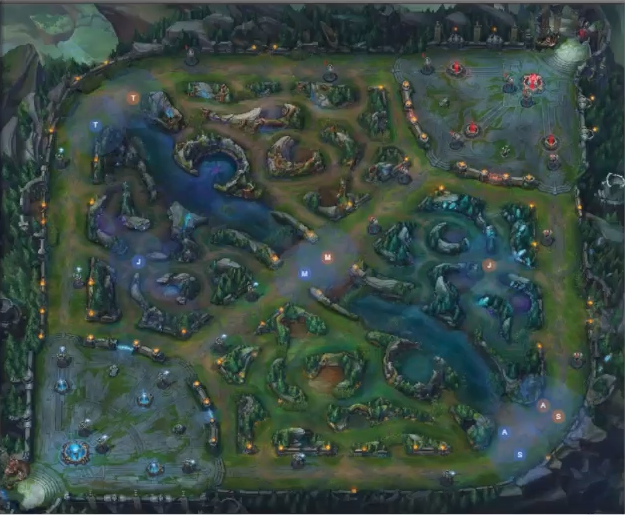
Summoner’s Rift
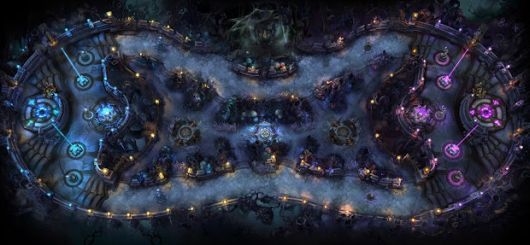
Twisted Treeline
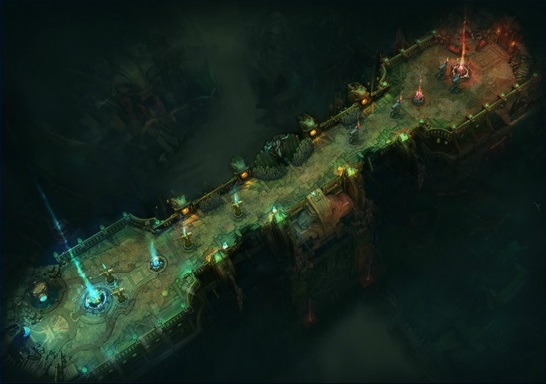
Howling Abyss
There are currently three maps that Summoners can choose from, depending on their party sizes and gaming preferences. Generally, the Summoner’s Rift map is the most popular map and allows for two teams of five to go head-to-head in a map comprising of three lanes divided by two jungle areas. Solo gameplays, also known as solo queues, are made possible with the implantation of automated bots.
Lanes
The number of lanes in a game will depend on the type of map used. For instance, while Summoner’s Rift has three lanes, the Twisted Treeline only has two lanes. In the howling Abyss, there is only one lane. Lanes connect the two bases in the game and serve as the main locations for the PvP battles.
The Jungle
This is the area found between the lanes in both the Summoner’s Rift and the Twisted Treeline map. Jungles are explorable and inhabited by various monsters that will enable Summoners to gain both XP and gold, outside of direct conflict with their main opponent/s. However, that is not the only function of the jungle. The jungle also acts as a shortcut to aid allies in conflicts, and to implement guerilla attacks against enemies. While one might stumble across another Summoner’s Champion, minions do not venture off of the lanes.
Turrets
Each lane has a number of turrets, defending each team’s respective base. Each team’s turrets are located in the portion of the map that is closest to their base and can both destroy and be destroyed by enemy units. The number of turrets allocated to each team is dependent on the type of map selected.
Nexus
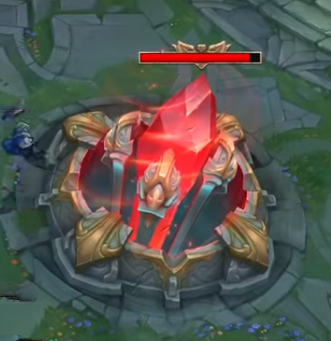 Each Summoner’s Nexus is located in the center of their base. The goal of each match is for the Summoner to infiltrate the enemy’s base and destroy their Nexus before they destroy the Summoner’s base.
Each Summoner’s Nexus is located in the center of their base. The goal of each match is for the Summoner to infiltrate the enemy’s base and destroy their Nexus before they destroy the Summoner’s base.
Runes
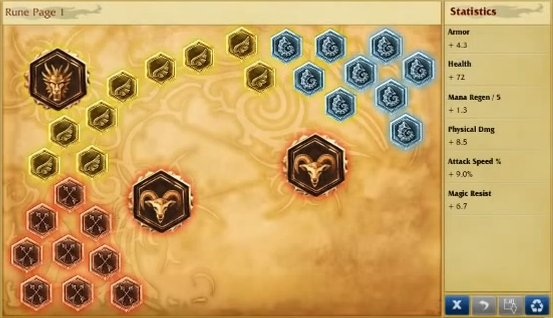
Runes allow Summoners to add pre-game buffs to their Champions, with certain limitations. The number of Runes that a Champion can optimize per game depends on the Summoner’s overall level, as well as the types of Runes that they have acquired. These are activated by applying them to a specific Rune page in your Rune book. Each Summoner starts with two Runa pages in their Rune book, with more pages being purchasable for either IP or RP, with a max. cap of 20 Rune pages per Summoner. There are four types of Rune slots are unlocked in this order at each level: marks, seals, and glyphs, with a quintessence slot being unlocked at each tenth level. This continues until the Summoner has unlocked a total of 30 Rune slots, 9 nine each for marks, seals, and glyphs and only three quitessence slots.
Summoners can set each Rune page according to a specific Champion type, do speed up the set-up process before beginning a game. Runes are purchasable only with IP, and each Summoner can only hold a total of 720 runes. Of course, the cost again promotes purchasing, rather than playing to acquire these Runes in order to succeed in the game.


